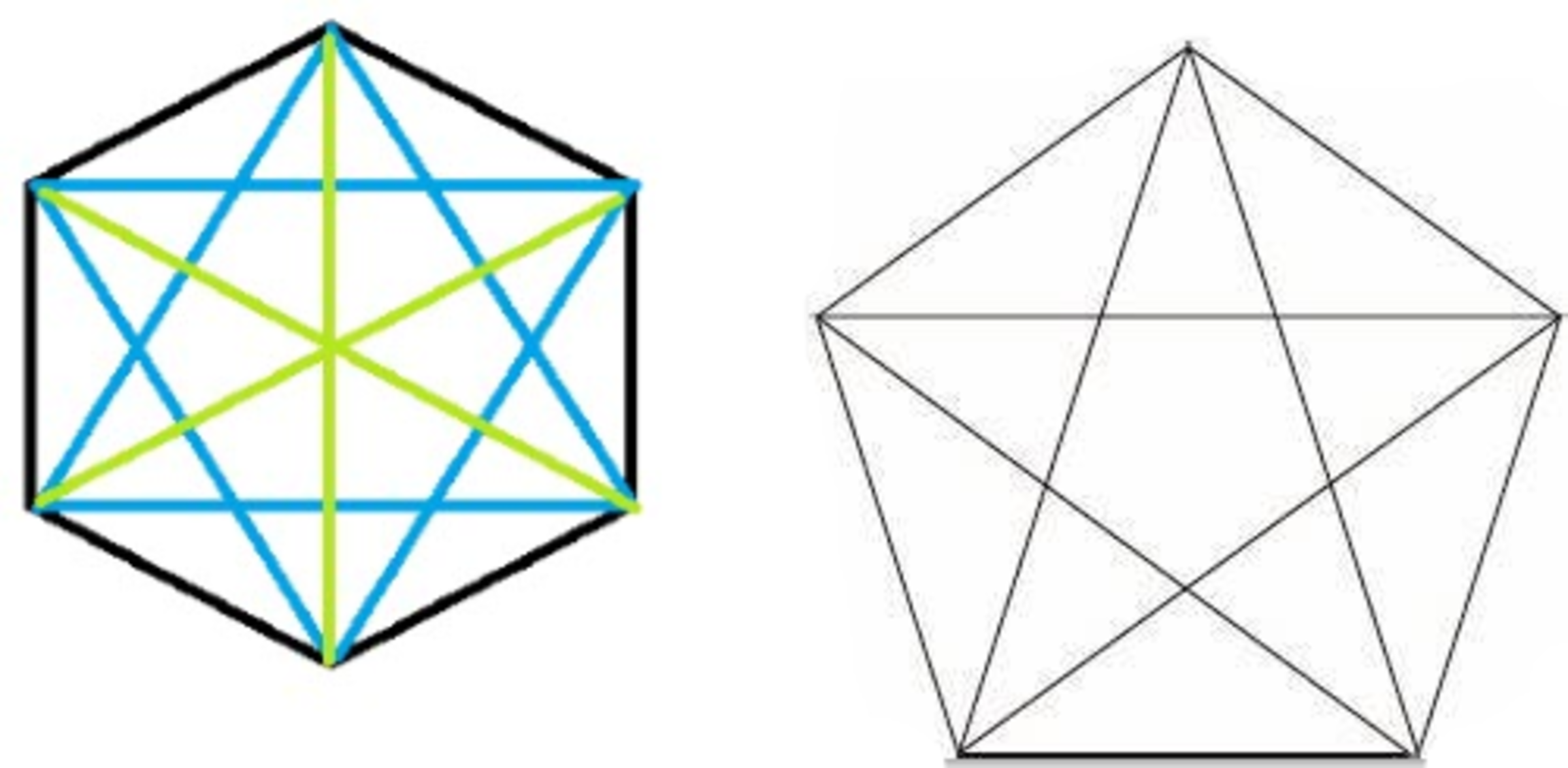Number of Parallel Diagonals
A regular
has
diagonals which are parallel to at least one other diagonal. A regular
has
diagonals which are parallel to at least one other diagonal and
diagonals which are not parallel to any other diagonal. What is the difference between the number of parallel diagonals (like mentioned before) of regular
and regular
?

This section requires Javascript.
You are seeing this because something didn't load right. We suggest you, (a) try
refreshing the page, (b) enabling javascript if it is disabled on your browser and,
finally, (c)
loading the
non-javascript version of this page
. We're sorry about the hassle.
All the diagonals of n − p o l y g o n (where n > 6 ) is parallel to at least one other diagonal.
[For proof, we can observe that triangles and quadrilaterals does not have any diagonal parallel to one of its sides. And when n > 6 every diagonal divides the polygon into 2 parts at least one of which is not a triangle or quadrilateral. So there is at least one diagonal parallel to that diagonal]
An n − p o l y g o n has n C 2 − n diagonals.
So 1 0 1 − g o n has 2 1 0 1 ∗ 1 0 0 − 1 0 1 = 4 9 4 9 diagonals and 1 0 0 − g o n has 2 1 0 0 ∗ 9 9 − 1 0 0 = 4 8 5 0 diagonals.
So the difference is 4 9 4 9 − 4 8 5 0 = 9 9